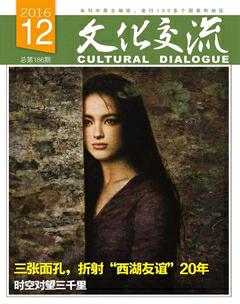歌剧《红楼梦》的启示
吴山青

剧团借助戏院而立足发展,戏院则凭借剧团而名扬四方,两者应当做到你中有我、我中有你,各得其所。
歌剧《红楼梦》
2016年9月10日,歌剧《红楼梦》在旧金山歌剧大戏院上演。
旧金山歌剧大戏院是世界歌剧界的重要演出场所,其短短几十年的发展过程和做法,对渴望文化发展繁荣的中国城市来说,有一定的启示作用。
进入21世纪以来,旧金山歌剧团致力于邀请世界顶级歌手参加演出。有不少全球巡演的歌剧在旧金山首演,其中包括《尼克松在中国》《秘密花园》和根据华裔美籍作家谭恩美小说改编的《接骨师之女》等。2016年,根据中国古典小说改编的歌剧《红楼梦》在旧金山歌剧大戏院全球首演。
2008年《接骨师之女》演出大获成功,这使得旧金山湾区的亚洲人和亚裔美国人对西式歌剧兴趣越来越浓厚。之后不久,坐落在明尼阿波利斯的中国传统基金会与旧金山歌剧大戏院总经理戈克利联系,商讨改编《红楼梦》事宜。戈克利进行市场研究后得知,所有中国人或者华裔美国人从小就以各种方式接触这个故事的各种演绎,于是决定上这个项目。
歌剧《红楼梦》由旧金山歌剧团制作,很能体现该团的运作方式。该团不求自己麻雀虽小五脏俱全,而是利用全球人才来制作。歌剧的主创人员和演出阵容来自世界各地,尤其是中国的杰出人才,大陆的盛宗亮和蜚声百老汇的美籍华人剧作家黄哲伦担任共同编剧,盛宗亮担任作曲,台湾的赖声川担任导演,香港的叶锦添担任舞台美术设计,上海的石倚洁出演宝玉,韩国的女歌手出演黛玉,阵容中还有相当一些外籍华人和其他亚裔人士。
旧金山当地媒体盛赞歌剧的音乐、服装、布景、演唱。评论家们认为,演出极为华丽,音乐使用中国民族乐器和曲式,极富想象力,是视觉和听觉的盛宴。
也许不是题外话,中国文化走出去,最早、最成功、最成气候的是音乐、戏剧、电影等方面的人才。改革开放30多年来,中国歌剧演唱家在世界各大歌剧舞台颇为活跃,涌现出不少世界级的小提琴、钢琴演奏家以及电影导演。从小的方面说,正是由于这些人的存在,旧金山歌剧大戏院才得以推出歌剧《红楼梦》这样的中国特色剧目;从大的方面说,中国文化才得以用外国人看得懂的方式,走出中国。
那么,具体而言,旧金山歌剧大戏院和歌剧团是如何运作与发展的呢?
旧金山歌剧大戏院和歌剧团
旧金山的文化市场,在第一次世界大战之后才进入真正的发展期。1923年,旧金山歌剧团成立,但旧金山还缺少一个专门的歌剧院。1927年,旧金山市政府发行400万美元城市债券,为歌剧大戏院的设计和建设筹集资金。1932年,旧金山歌剧大戏院建成。
歌剧团借助大戏院而立足发展,大戏院则凭借歌剧团而名扬世界,两者真正做到你中有我、我中有你,各得其所。在旧金山的文艺界,大演出团体往往是公司性质,往往是发达后建起属于自己的演出场所,但无论是先有巢后引凤,还是先有凤后筑巢,都是人才决定命运。
旧金山歌剧团的发展,要归功于其历史上的数位掌舵者。该团一共有过7位总经理,任期较长且影响较大的是莫罗拉任期30年(1923—1953),继任者阿德勒任期28年(1953—1981)。
莫罗拉首次访问旧金山是1906年,后来作为指挥常带演出团体来此演出歌剧。1921年秋天,他来旧金山定居,并在1922年建立了旧金山歌剧团。他让旧金山相信,这个城市文艺市场足够繁荣,可以养活一个歌剧团。由于资金短缺,第一个演出季前后持续5天,此后他发起捐款活动,结果全市有2441人响应了每人捐50美元的号召。就这样,旧金山歌剧团开始了它的辉煌生涯。莫罗拉使歌剧团获得斐然名声,演出在美国各地广播电台转播,很多年轻的歌手得到了演出机会。
阿德勒1938年从奥地利来到美国,为芝加哥歌剧公司建了一个合唱队,五年之中成绩斐然。莫罗拉听说后打电话邀请阿德勒来旧金山歌剧团担任合唱队总监。1953年,阿德勒接任总经理,鼎力开拓——旧金山歌剧演出季从9月初开始延续到11月底,演出场次也有所增加。1961年秋季演出季,共上演11部歌剧,每部大约上演5至6场。
阿德勒致力于挖掘和培养新人。在1954年、1955年间,他推出了一个培养工程,不少新人通过这个工程培训成长为国际名人。这个计划在1957年命名为莫罗拉歌剧工程,至今仍在延续。
在阿德勒主持下,每年秋天演出季开始的前一天,旧金山歌剧团与旧金山歌剧交响乐团合作,在金门公园举办免费歌剧音乐会,由非营利组织赞助。自1971年创办以来,年年举行,每场音乐会吸引三万听众出席。
旧金山歌剧团在普及歌剧艺术、培养歌剧观众和加强与社区、学校的联系等方面,也不遗余力。它举办各种活动,邀请当地知识精英介绍歌剧的各种知识,还在学校和社区培养对歌剧所涉及的音响、舞台设计、服装、乐器和演出等有兴趣的少儿人才。这些活动蓬勃开展,使得歌剧成为当地人们日常生活的一部分,成为城市文化生活的亮点,成为媒体持续关注的新闻事件。
(本文图片由作者提供)
On September 10, 2016, , an opera adapted from Chinese classical novel of the Qing Dynasty, made its world debut at San Francisco War Memorial Opera House.
For some cultural trends observers in China, the event at the opera house is a case study for Chinese cities with cultural ambitions. Over the past decades, the cities across China have prospered due to the successful modernization drive and implementation of the policy of opening up to the outside world. Grand theaters have mushroomed, but shows are yet to catch up.
In the 21st century, San Francisco Opera has intensified its efforts to get more world class opera singers to participate in its opera projects. San Francisco Opera has presented several world premieres such as , and , an adaptation from a namesake novel by Chinese American writer Amy Tan.
The success of in 2008 made the Asians and Asian Americans in the bay area of San Francisco become more interested in the western opera. China Heritage Foundation in Minneapolis approached David Gockley, general director of the troupe, for adapting the Chinese classical novel Dream of the Red Chamber. After studying the market in San Francisco, Gockley became aware that the novel exerts a wide influence on Chinese. He learned from members of the Chinese community in San Francisco that there is not a Chinese or a Chinese-American who has not grown up and had some contact with this piece in some form.
The way SFO produced the opera play is typical of the way the opera troupe operates and flourishes. Many important players of the cast and crew were from all over the world and some celebrated Chinese were in the production, including composer and co-librettist Bright Sheng, co-librettist and playwright David Henry Hwang, director Stan Lai, Production Designer Tim Yip, Yijie Shi who acted as Bao Yu the hero.
The local media responded warmly to the performance, heaping beautiful words on the music, singing, stage design, etc.
It is not meaningless to point to the fact that Chinese talents of music, theater and cinema are among the first driving force that has brought Chinese culture to the world. Over the past 30 plus years since the opening up to the outside world, Chinese musicians, opera singers and film directors have made high-profile appearance in the world. It is due to some of these talents that SFO was able to stage .
San Francisco Opera House and San Francisco Opera can be a revelation to troupes and theaters in China.
The entertainment market in San Francisco saw a booming growth after World War One as testified by the mushrooming of theaters and other entertainment venues. In 1923, San Francisco saw the founding of its first opera troupe, but the city did not have a standard opera theater to go with the troupe. In 1927, the city government issued 4 million bonds to raise funds for designing and constructing an opera house. In 1932, the opera house came into being and has housed the opera troupe since then. The house has helped the troupe grow and the troupe in turn has made the house well known across the world. The two have fused in one in a sense.
The success of the troupe can be attributed to the seven general directors in its history of nearly 100 years. The most influential are probably the first two of them.
The first general director was Gaetano Merola who directed the troupe from 1923 to 1953. He was the first one who firmly believed that the city could support an opera troupe. The first season was a popular and critical triumph, but it was not a financial success. He started a fund-raising initiative and 2441 responded by donating 50 dollars. With the funds raised, the second season was much better. During the thirty years, Merola did his best to get international singers to appear in his operas. The international opera seasons marked SFO growth. He gave young American singers opportunities and his troupe performed in Los Angeles. Some short versions of the works he staged were broadcast on about 30 radio stations.
Kurt Herbert Adler succeeded Merola and served as general director of the SFO for 28 years from 1953 to 1981. He extended the autumn season from early September to the end of November. In 1955 he started a training project for opera novices. In 1957 the project was named after Merola. The project has been going on since then. Adler also initiated a free concert at Golden Gate Park in San Francisco in 1971. The annual event now attracts 30,000 listeners.
San Francisco Opera works closely with local communities. It holds various projects to train talents, inspire curiosity and interests, and disseminate knowledge and aesthetics of opera, thus making itself part of the cultural scene of the city.

